- The Rivian emissions report compiles grams-per-mile CO₂ ratings from sourcing raw materials to scrapping the vehicles at the end of life.
- The Rivian Dual Motor models have an 8% lower CO₂ rating than the Launch Edition edition models.
- Of the Rivian lineup, the Electric Delivery Vehicle is the cleanest, having the lowest CO₂ cradle-to-grave emissions.
Rivian is responding to the need for vehicles with zero emissions to slow and hopefully reverse climate change. To show the world how the Rivian lineup of trucks and SUVs is affecting the climate, the automaker released its carbon footprint report — which is a work of scientific art that analyzes the carbon footprint of the materials, manufacturing, and motoring of the innovative Rivian lineup.
ADVERTISEMENT
Building the Rivian Report
The automaker assessed its carbon footprint using ISO methodology. The Rivian emissions report included several variables including manufacturing, transporting, driving, and fueling the EVs. In the spirit of transparency, the findings were shared in CO₂ emissions per mile, and the Rivian report clearly states that the findings only get better the more the vehicles are driven. Carbon emissions are amortized over the lifespan of the vehicle.
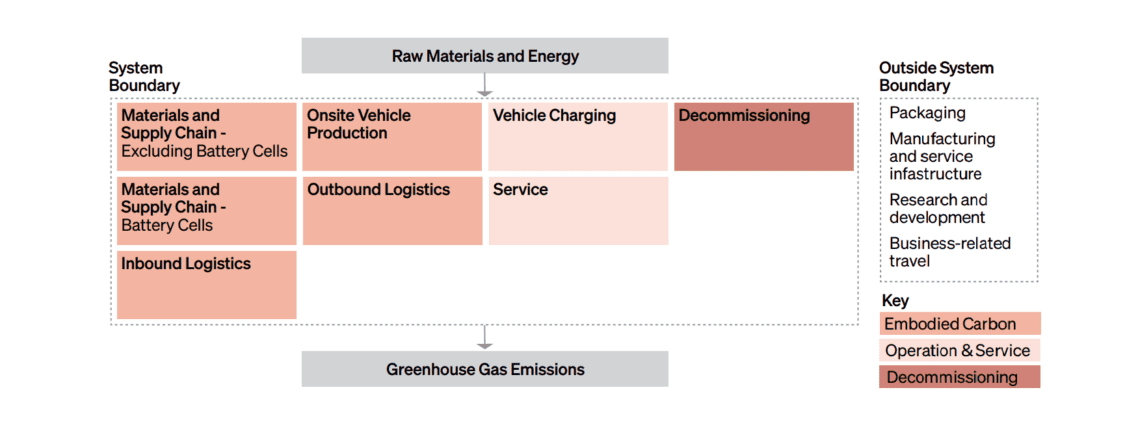
Troubles Forecasting Emissions From the Electric Grid
Understandably, Rivian engineers explain that forecasting greenhouse gas emissions from the electric grid is nearly impossible, as communities get their electricity from a variety of sources like wind, coal, and solar energy. In order to reduce CO₂ emissions, Rivian works hard to use renewable energy sources to power its facilities. When it cannot, it relies on renewable resources to fill the gaps when fossil fuels are the only option.
EV Batteries and Disposal Emissions
The first part of the Rivian report is about the methodologies used to craft the report itself. Rivian writers share that the battery cells in the high-voltage battery are evaluated differently than the rest of the vehicle components. The automaker has a unique model that explains the relationship between the battery cell materials, upstream production, and greenhouse gas emissions.
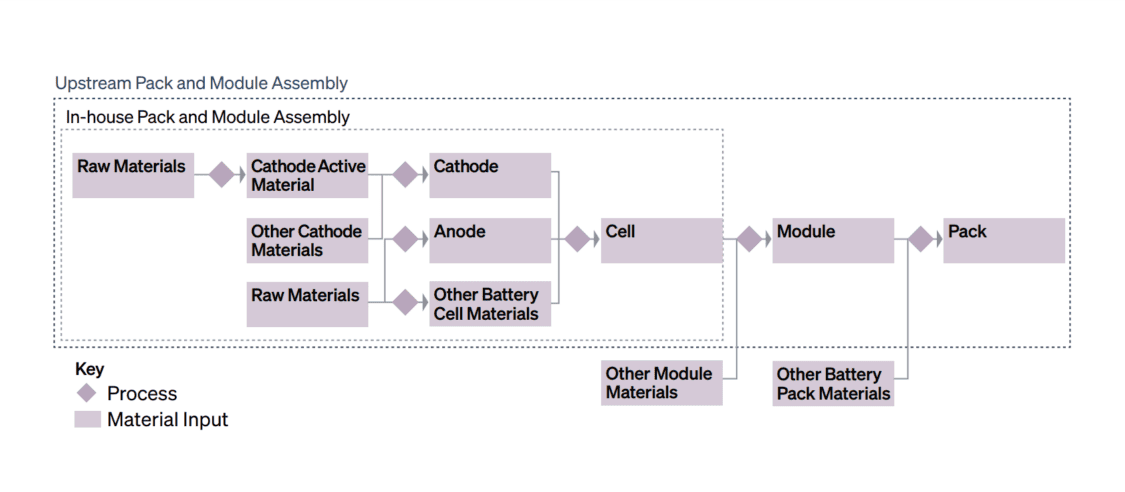
The report also includes what Rivian does with scrap materials and disposal methods, all with the goal of reducing greenhouse gas emissions. When the scrap enters Rivian’s supply chain, it can no longer be used for greenhouse gas credits. The scrap is included in Rivian’s emissions footprint using ISO 14044 steps. Some scrap is used in vehicle assembly, so the automaker determines some greenhouse gas emissions based on vehicles produced in the Normal, Illinois, assembly plant.
Before sharing the information with the public, Rivian had it reviewed by Dr. Christoph Koffler, the Technical Director of Americas of Sustainability Consulting at Sphera. Each vehicle was analyzed from cradle to grave — through the full potential lifespan. Rivian expects its EVs will be drivable for at least 10 years.
ADVERTISEMENT
The 2022 Rivian R1T Launch Edition
The first report involves the R1T Launch Edition, which debuted in 2022. The quad-motor all-electric Rivian pickup truck can tow up to 11,000 pounds and maneuver most types of terrain. It was the first all-electric truck and in direct competition with popular ICE vehicles like the best-selling Ford F-150 and award-winning RAM 1500. According to the EPA, light-duty vehicles like cars and trucks are the largest contributors to CO₂ emissions, so lowering those numbers with more EVs could help with overall greenhouse gas emissions.
Comparing Emissions from R1T and Typical ICE Vehicle
The emissions numbers are based on an entry-level R1T Launch Edition driven 155,000 miles over 10 years of ownership. According to the report, “The average R1T Launch Edition, driven in the United States with an assumed 3% year-over-year improvement in the carbon intensity of grid electricity, has a total carbon footprint of 424 g CO₂e per mile over 155,000 miles.”
According to the EPA, burning a single gallon of gas produces 8,887 grams of CO₂, as the carbon and hydrogen separate. Also according to the EPA, the average gas-powered vehicle emits 400 grams of CO₂e per mile — and this number does not include emissions from sourcing raw materials, transporting them, manufacturing, and other variables from cradle to gate.
Remember that a vehicle with an internal combustion engine also releases methane and nitrous oxide from the tailpipe. Producing, refining, and transporting gasoline also uses greenhouse gases. Those numbers are not factored into the CO₂e per mile figure for ICE vehicles, but moving electricity upstream to charging stations is factored into the CO₂e per mile figure for the R1T. The same goes for the rest of the Rivian lineup.
Upstream Carbon Emissions in Gas-Powered Vehicles
The EPA’s Find and Compare Cars tool provides information about vehicle emissions and gas mileage. I ran a side-by-side comparison of a 2022 Ford F-150 and Ram 1500. According to the EPA (the numbers only include fuel upstream and usage):
- A 2022 Ford F-150 with FWD and a turbocharged 2.7-liter six-cylinder releases 510 grams CO₂e per mile
- A 2022 Ram 1500 with FWD and a 5.7-liter V8 releases 630 grams CO₂e per mile
ADVERTISEMENT
Remember, the R1T with four electric motors, all-wheel drive, and an 11,000-towing capacity released 424 g CO₂e per mile including all emissions released, from sourcing raw materials to scrapping the vehicle at the end of its life.
Figuring the R1T Greenhouse Gas Emissions

With a range of 328 miles using 20-inch standard road tires, the R1T uses approximately 172 grams of CO₂ equivalents per mile (e/mi) to charge and service the vehicle — with most charging using some renewable sources. This worst-case scenario is about 40% of the per-mile greenhouse gas emissions, and remember that the vehicle itself does not release any carbon emissions while driving.
The remainder of R1T emissions numbers come from sourcing and transporting raw materials, sourcing materials and manufacturing the battery, assembling the R1T, and scrapping the vehicle at the end of its life.
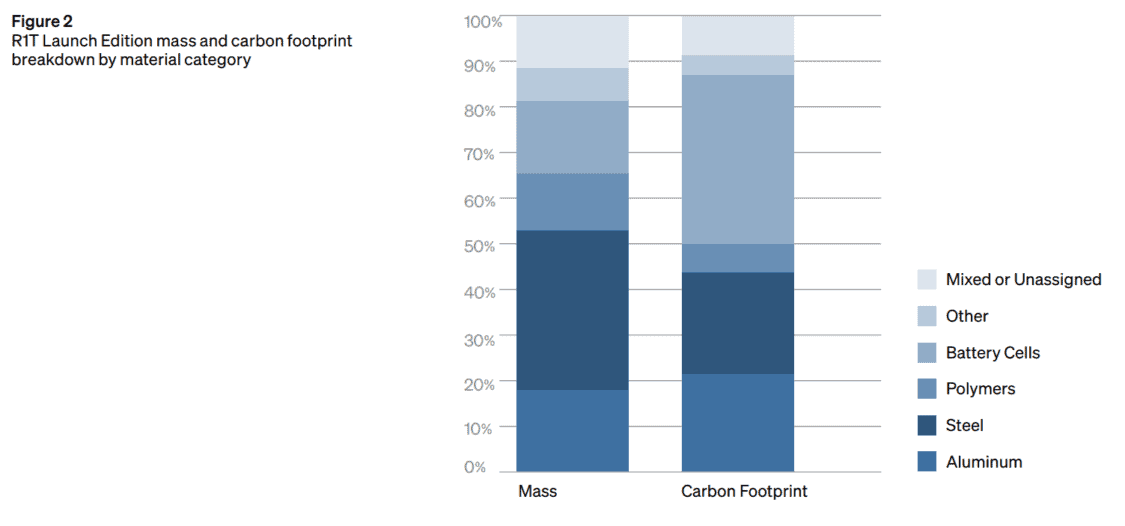
Unique variables like the electrical grid, tire size, and sourcing raw materials can affect the carbon emissions of a singular R1T Launch Edition. For example:
- If all charging is done with renewable energy like solar or wind, CO₂e can drop by up to 200 grams of CO₂e/mi.
- In worst-case charging scenarios, emissions numbers can increase by up to 125 grams of CO₂e/mi.
- Increasing tires to 22-inch all-terrain models reduces efficiency by about 10 grams of CO₂e/mi.
- Charging the sourcing of all raw materials can affect the grams of CO₂e/mi in either direction.
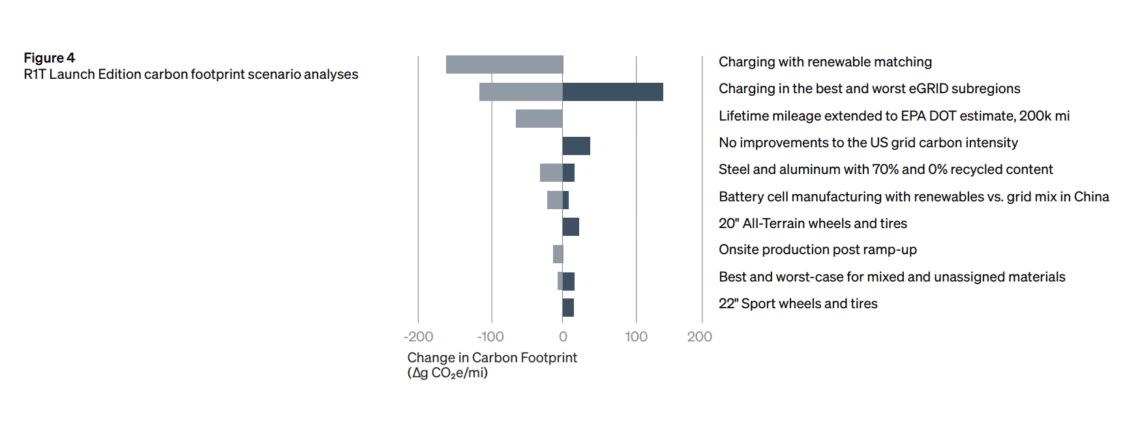
The 2022 Rivian R1S Launch Edition
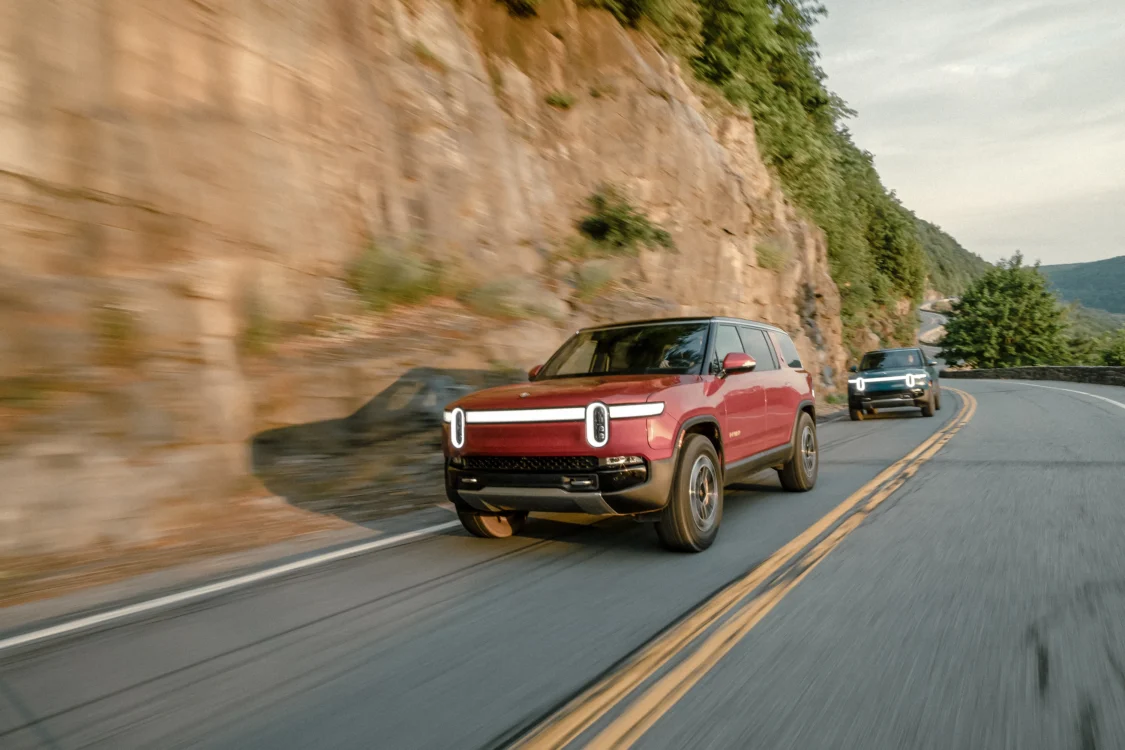
Like the Rivian R1T, the Rivian R1S Launch Edition debuted in 2022. The SUV is a quad-motor all-electric SUV with three rows and seating up to seven. It’s the first seven-passenger SUV from Rivian and was designed to compete with SUVs with internal combustion engines and terrible emissions numbers.
Rivian used the same standard to evaluate the R1S Launch Edition. The results of driving the vehicle 155,000 miles with an assumed 3% year-over-year improvement in the carbon intensity of the electric grid puts the total carbon footprint at 428 g CO₂e.
The Rivian Electric Delivery Vehicle
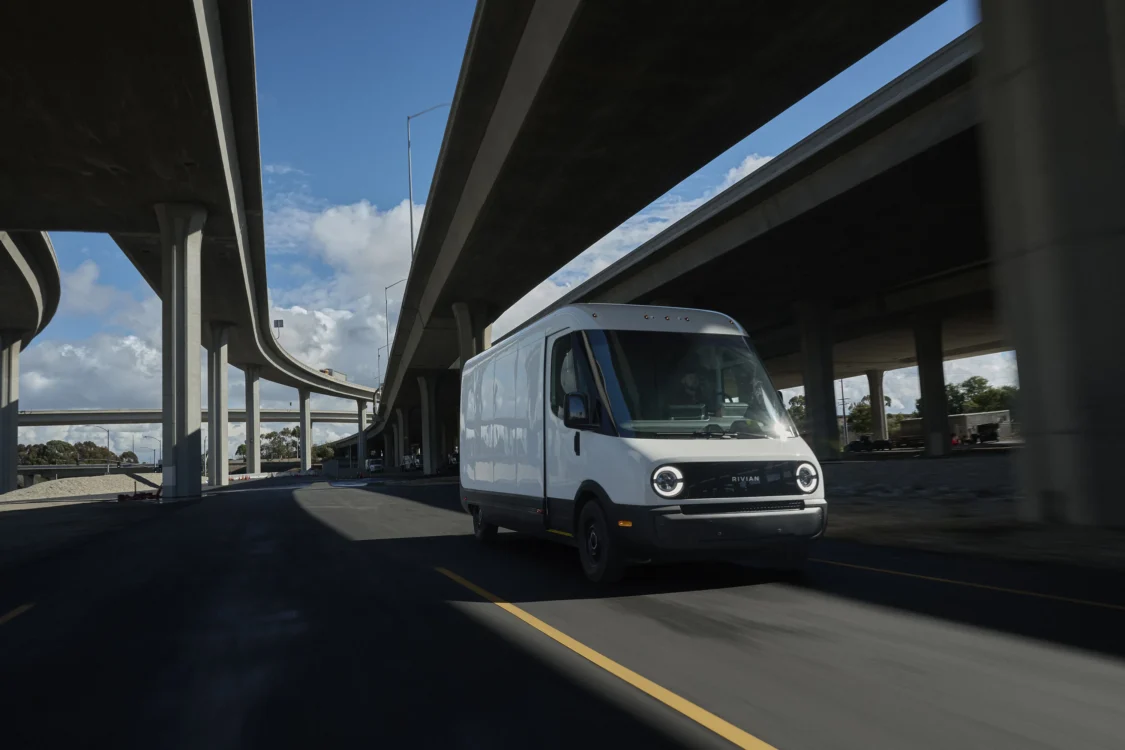
If you’re lucky, your Amazon packages are delivered by a Rivian EDV. These zero-emissions vans debuted in 2023 and are available in two sizes: the EDV 700 and EDV 500. The Rivian report looked at the base models of both EDVs and figured CO₂e/mi over a 10-year period of driving 330,000 miles.
The results were:
- EDV 700: 387 g CO₂e/mi.
- EDV 500: 364 g CO₂e/mi.
These numbers were factored assuming a 3% year-over-year improvement in the carbon intensity of the electrical grid. Both versions of the Rivian Amazon van have a lower EPA-estimated range than a typical passenger vehicle. The EDV 500 has a range of 161 miles, while the EDV 700 has a range of 152 miles.
As Rivian continues manufacturing the EDV, the automaker expects to reduce carbon emissions by implementing more efficient practices. The automaker is already seeing more efficient production as it compares the 2022 and 2023 numbers.
Rivian Dual-Motor Passenger Vehicles
After the success of the Launch Edition models, Rivian released the R1T and R1S with dual motors. Powering two electric motors requires less battery power, making them more energy efficient than the Launch Edition counterparts.
Rivian evaluated the R1T and R1S Dual Motor models. The reduced carbon footprints of the dual-motor models were impressive:
- R1S Dual Motors: 392 g CO₂e per mile.
- R1T Dual Motors: 388 g CO₂e per mile.
The automaker improved overall emissions by developing more efficient onsite production and in-house designed drive units. Both models saw a reduction of 8% g CO₂e compared to the 2022 Launch Editions. With renewable matching, the CO₂e numbers can drop by up to 34%.
The R1T Dual Motor has a top range of 358 miles, and the all-electric truck can still tow up to 11,000 pounds. The R1S Dual Motor has a range of 352 miles and seats seven.
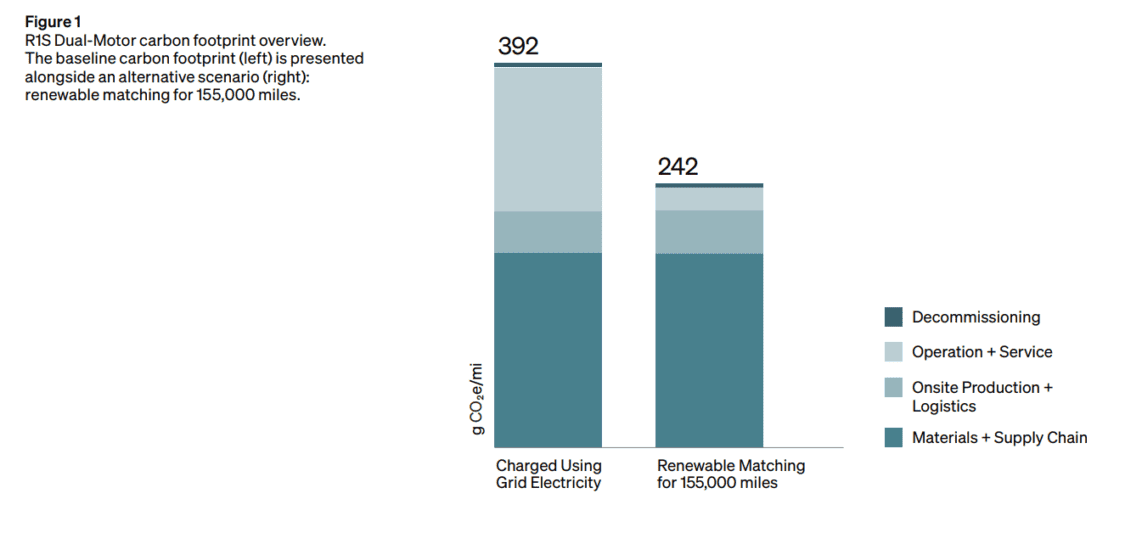
Final Thoughts
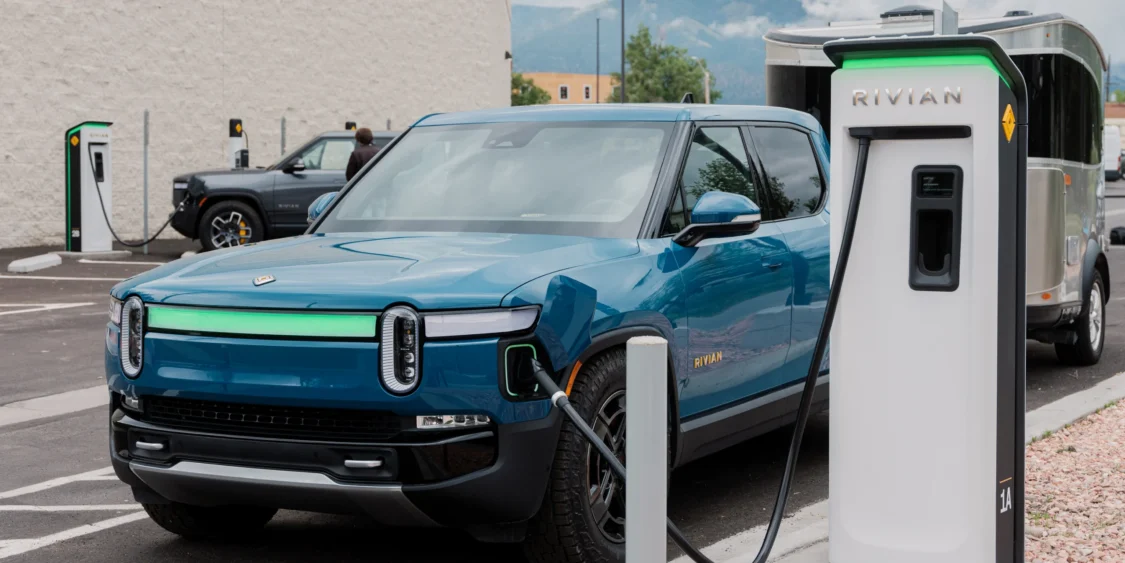
Manufacturing electric vehicles and ICE vehicles releases a significant amount of carbon dioxide. The major difference between EVs and ICE vehicles comes with CO₂ emissions while on the road. Throughout the ten-year lifespan of an EV, it releases less CO₂ per mile including cradle-to-grave emissions than an ICE vehicle emits only while driving.
Rivian proved it can be done thanks to this robust report, which should encourage other automakers to take real steps to reduce lifespan emissions to protect our planet for future generations.
ADVERTISEMENT

SOURCE | IMAGES: RIVIAN
FTC: We use income-earning auto affiliate links. Learn more.




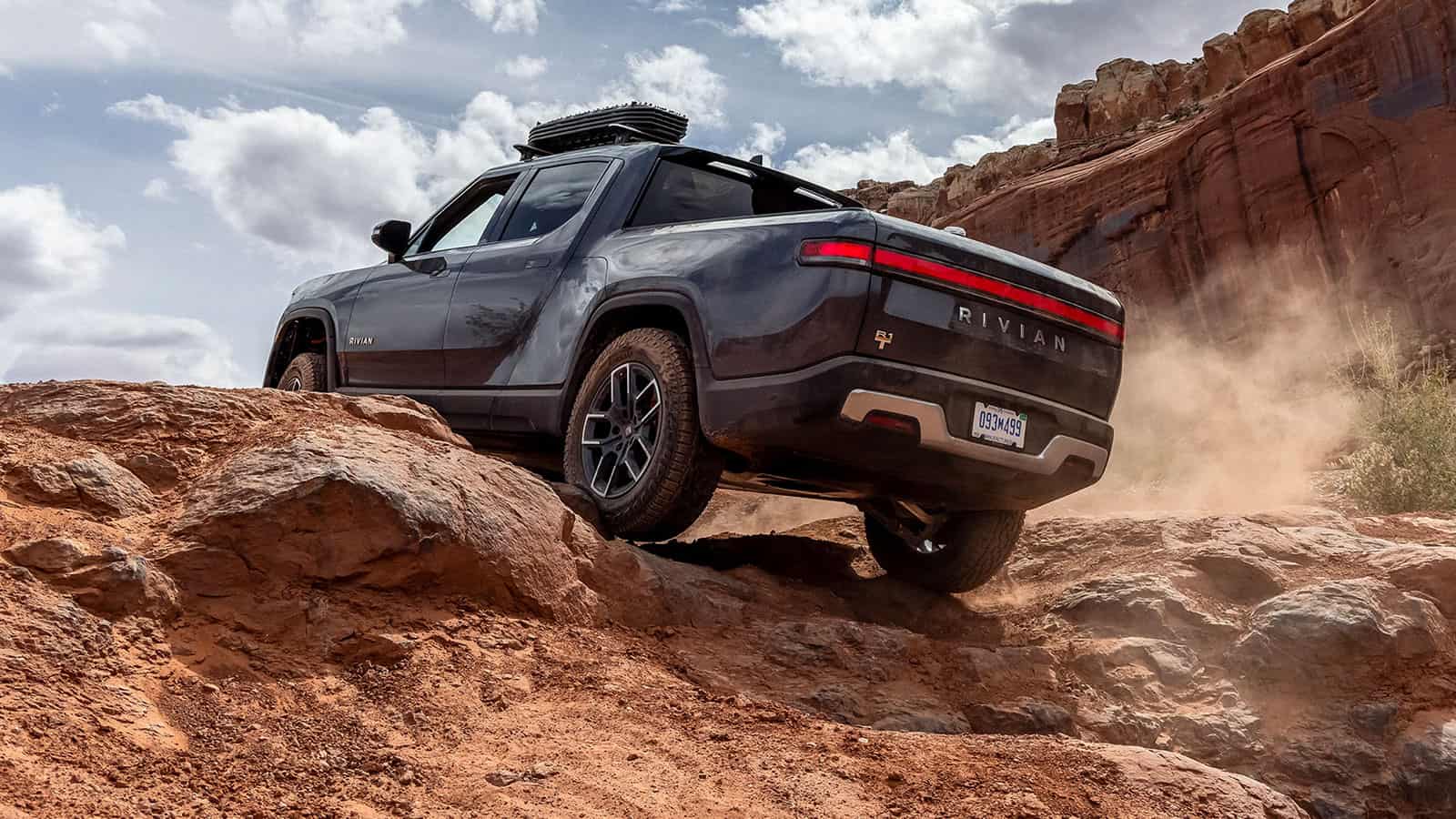

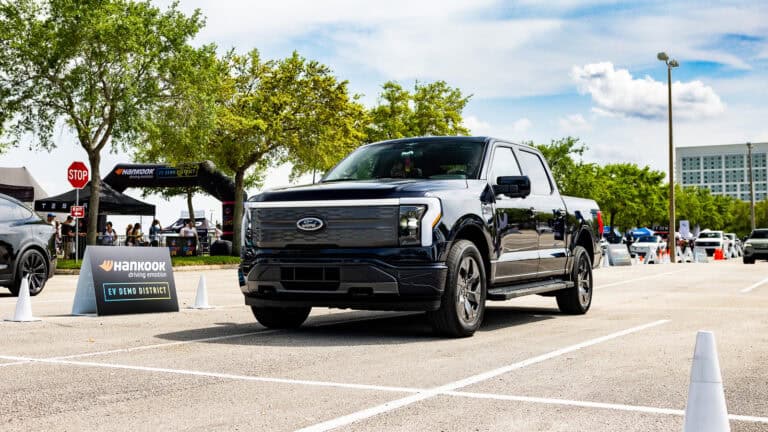
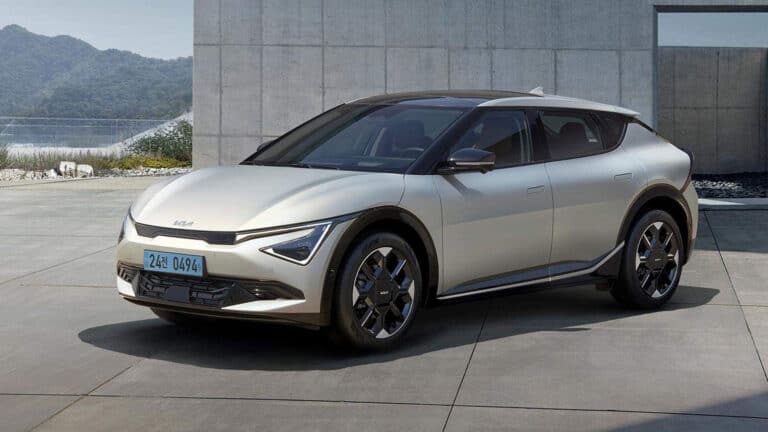
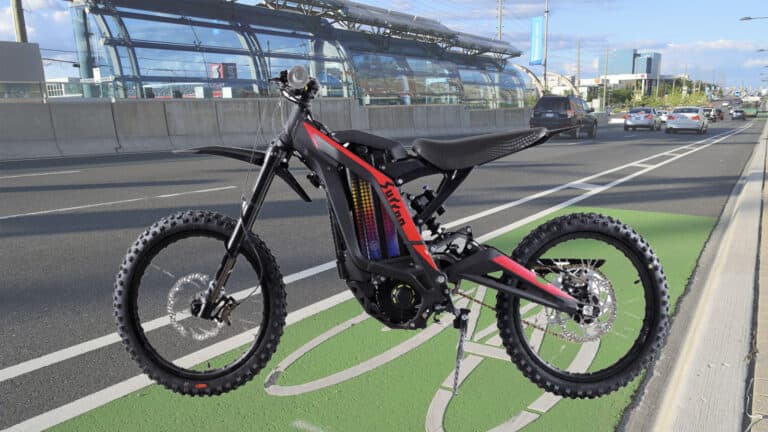










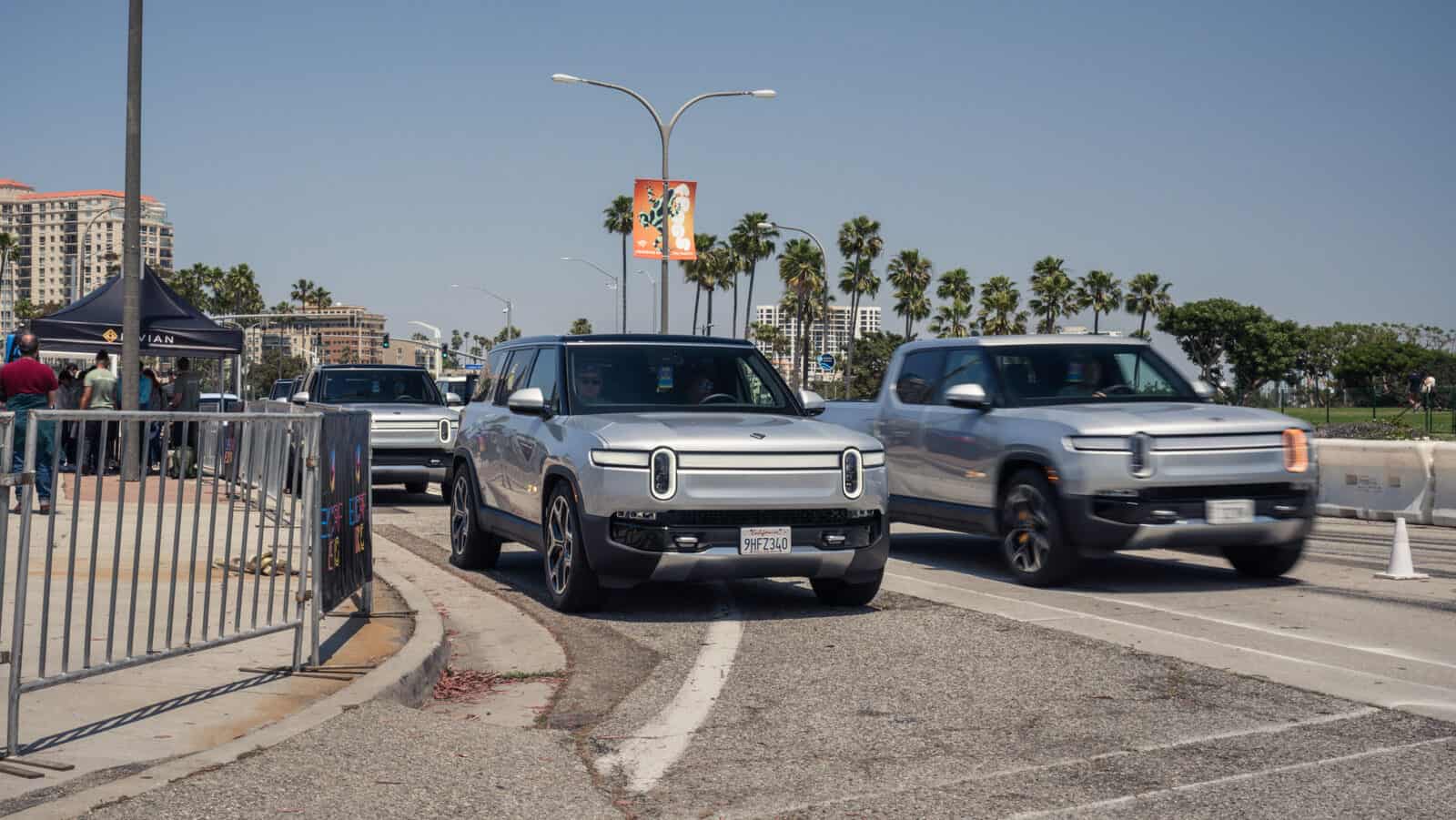
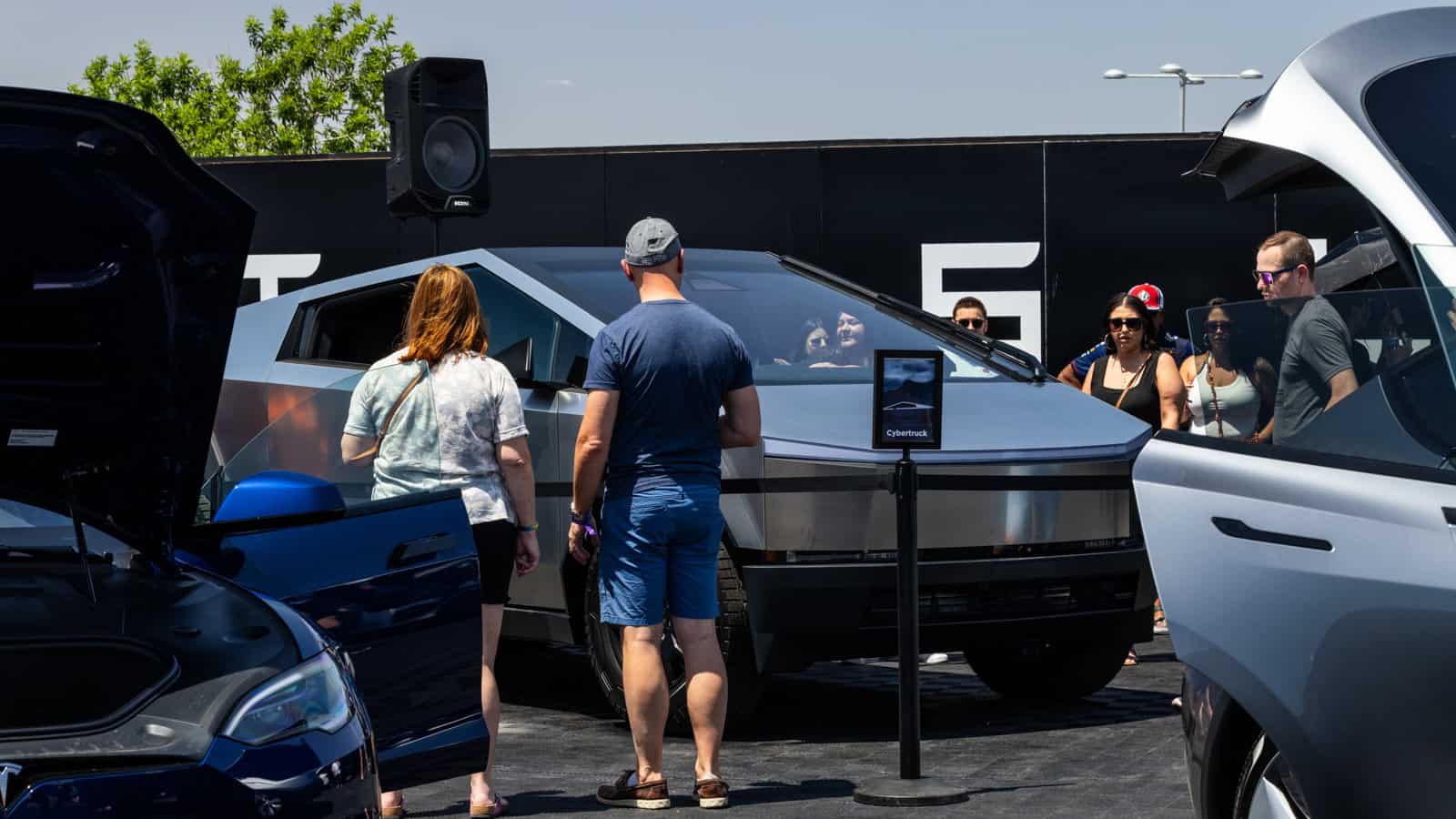
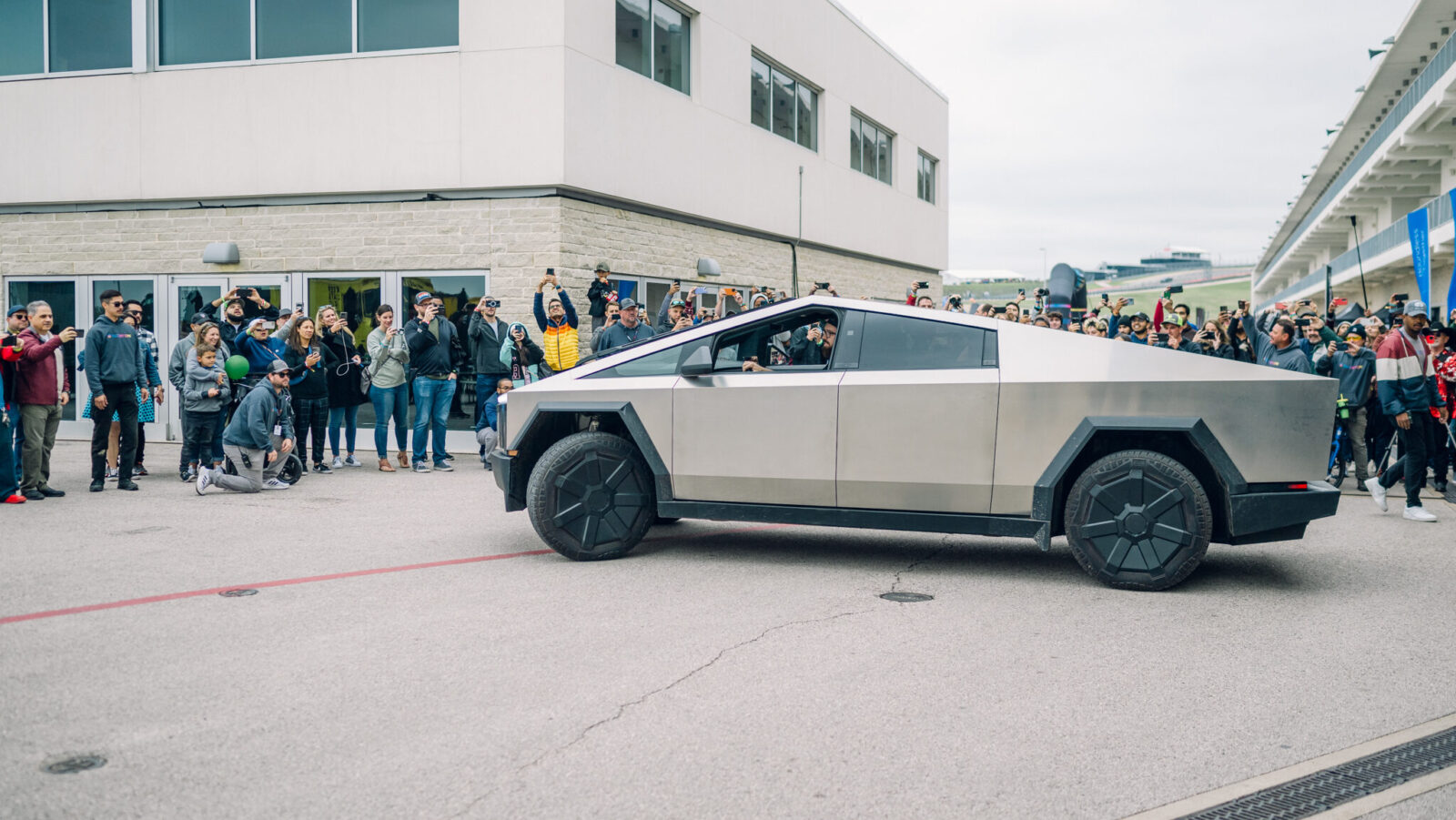
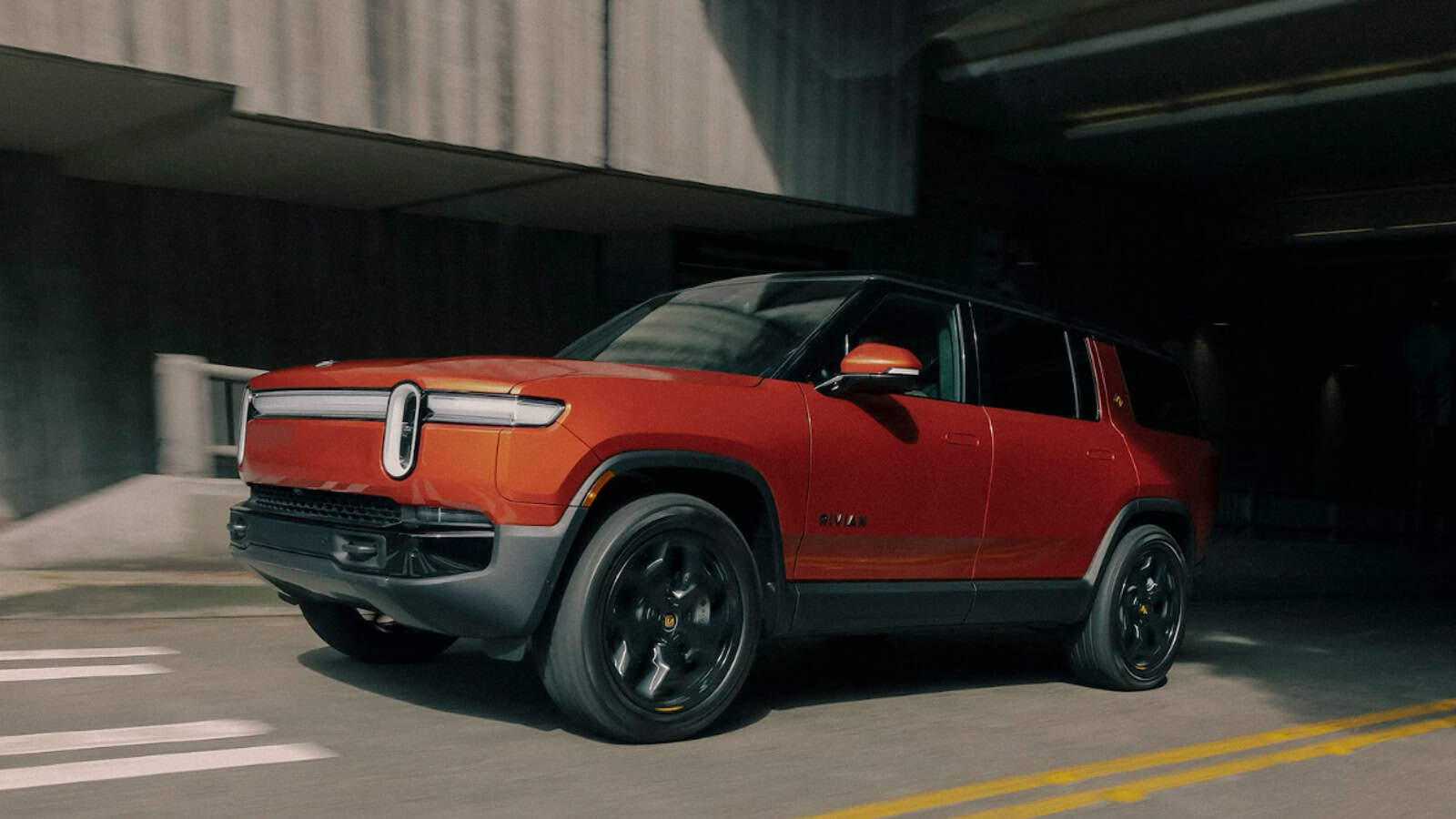
One Response
“Throughout the ten-year lifespan of an EV, it releases less CO₂ per mile including cradle-to-grave emissions than an ICE vehicle emits only while driving.” This is even more encouaging when you consider the total CO2 created in the production of ICE fuel, which is stagering!